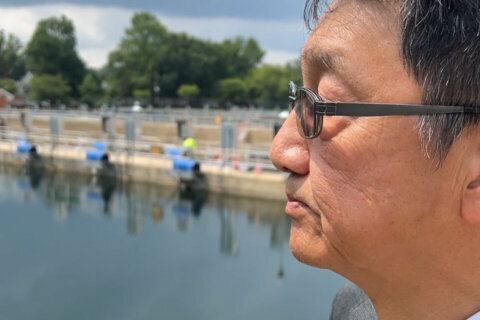If someone is overdosing on drugs, would you recognize what was happening and know what to do?
Free training and access to the lifesaving overdose-reversing medication naloxone is available throughout the D.C. region — anyone might find it useful.
“The youngest patient we’ve encountered with an opioid overdose in the last year was 14, and the oldest was 70. So it does not discriminate,” said Capt. Steve Hartman of the Fairfax County Fire and Rescue Department community risk reduction section.
“With opioid use disorder, it doesn’t know any socioeconomic boundaries. It also doesn’t know any age boundaries,” he said.
REVIVE!, the free Opioid Overdose and Naloxone Education Program training sponsored by the Commonwealth of Virginia, educates people about what opioids and addiction are, what an opioid overdose looks like and how to use and administer naloxone.
“You can learn this information in as little as 10 minutes, or take the full course for an hour, and have this life-saving medication on your person and save somebody’s life. And you can also help to change the stigma in our community,” said Marla Zometsky the Manager of Wellness, Health Promotion & Prevention with the Fairfax-Falls Church Community Services Board.
After the training, participants receive a kit with gloves, a face mask, a face shield, and naloxone with instructions on how to use the antidote.
“There is a standing order in Virginia that anybody can receive naloxone. We offer it for free,” Zometsky said.
Fairfax County REVIVE! courses happen in English and Spanish virtually; they can occur in person. There’s a condensed version of the 60-minute training called rapid REVIVE you might see out in the community at a tabling event, a house of worship, or at the Rec Center.
People can sign up on the county website or request customized training sessions.
“All you have to do is contact us and we will set up a training for your group, your organization, your business,” Zometsky said.
Police and Fire Department personnel in Fairfax County all carry naloxone, but getting help from them still requires a call to 911 and waiting for them to arrive.
“Lay people and potential bystanders or potential rescuers should not fear assisting somebody who has overdosed on an opioid,” Hartman said, while noting that “two major toxicological associations in the United States have issued a joint statement asserting that the risk of fentanyl overdose via incidental transdermal exposure, which means through touching by skin, is very low and that it would take hours of breathing fentanyl at the highest airborne concentrations to begin to experience symptoms.”
There is very minimal contact with the person needed to administer nasal Narcan. “And then further — the REVIVE! kits also contain personal protective equipment like gloves and barrier masks. So people should not fear or be hesitant to assist somebody who’s experiencing an opioid overdose,” he said.
The opioid crisis and threat from overdoses is a persistent threat.
“Fatal drug overdose is the leading method of unnatural death in Virginia. And we all have a role to play to stop that,” Zometsky said.
In D.C., the Opioid Overdose Prevention & Naloxone Education (Community) Course is available at any time online.
In Maryland, you can get free naloxone in person or by mail through the Overdose Response Program on the Maryland Department of Health website.
On Friday the U.S. Department of Health and Human Services is marking the one-year anniversary of HHS’s Overdose Prevention Strategy and announcing new steps to expand access to naloxone to underserved communities.








